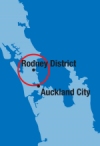News
Regional review: Prospecting Rodney
Sunday 6th of December 2009
Rodney District, some would say, has it all. That's because there aren't that many parts of the country where you can buy a tidy three-bedroom rental, minutes' walk from the beach, and commuting distance to a major centre for not that much more than the national average price.

This district, on Auckl...
Want to read the full article?
Click the button below to subscribe and will have unlimited access to full article and all other articles on the site.
8 min read
10 min read






![[The Wrap] Bye Bye Bayly](https://goodreturns.publit.io/file/c_fill,w_900,h_600/39f23ac1-f7c7-4854-b700-a150004ebbac.webp)


